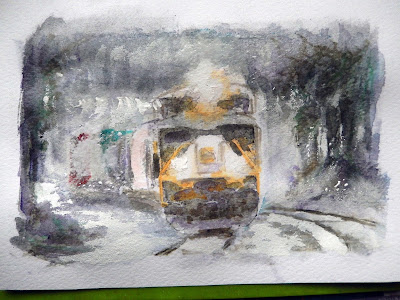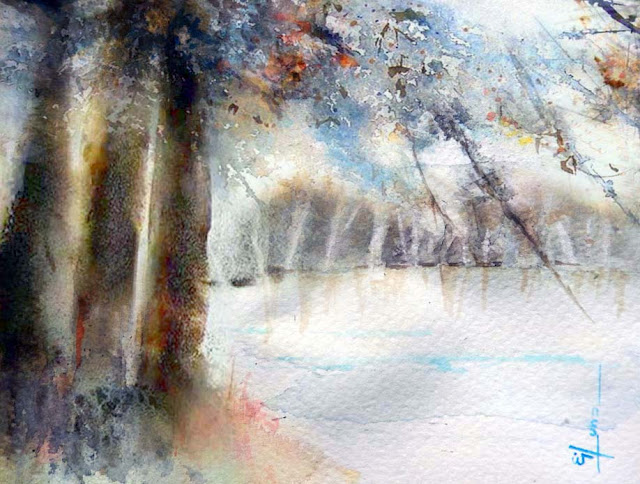This is the result of apply this process;
Main Steps;
.-- Powder graphite is diluted in a pool of wáter, to be applied in a selective but not precisely way, reserving highlights and White paper, the primary pure color was already added around the beams of this locomotive; The poder graphite in this first aplication is more diluted than the second one to be applied later
.-- With sandwall paper grit No 100, elaborate some forms and shadows mainly at the brushes áreas, after has been completely dry
.-- 2nd texturization; In this ocassion, the poder graphite is less diluted than the first one, and we can apply darker colors with watercolor as needed , once gets dry we apply the fixer to avoid muddy conditions for our following steps, (if needed you can repeat the sanded process, scratch it out, spattering, lift color anything you need on the paper)
I was looking for a darker appearance to make contrast with the snow I´m going to add, so darker color for this example work better, In the next step with an spatula and with old brush I´m adding whites to reflect snow in different spots accordingly and I start to define forms with a finer pencil with dark colors
Finally and once completed the brush detailed job, I start to spattering yellowish paint around the beams and White paint in the rest to reflect an snowing condition



























